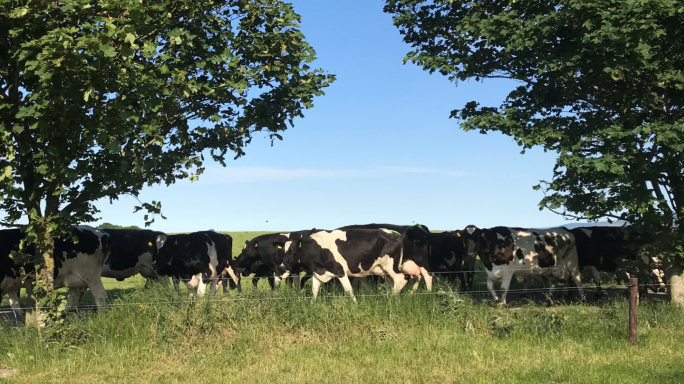Grass growth levels continue to deteriorate

Farmers have been encouraged to put in place a plan to tackle the impact of deteriorating grass growth levels.
The latest survey by Glanbia Ireland’s Technical Advisory team includes data from over 400 farms, representing the full milk pool across the catchment area, found soil moisture deficits are impacting on growth.
It varies significantly throughout the catchment area, with the east and north-east worst affected, due to lack of rainfall and compounded by soil types in some areas.
The survey found:
- Around 7% are experiencing a critically low level of grass cover below 500kg DM/ha. A further 28% could be in the same situation within 7-10 days without taking immediate action to bridge the demand/growth gap
- The figures show large variations in growth rates at 52.4 kg/day in Tipperary; 40.8kg/day in Kilkenny; 40kg/day in Wicklow/Wexford; 30kg/day in Carlow; 28kg/day in Kildare and 21kg/day in Meath.
- Average farm cover indicates intervention on some farms and silage feeding in many areas.
- In the five worst affected counties, two out of every three milk suppliers are already feeding silage.
The technical advisory team found there was a significant gap in the volume of first-cut silage ensiled compared with a regular year. However, again this varied between locations.
On average, the shortfall represents 10 days of winter feed across the GI area. However, it is as high as 23 days silage equivalent in the worst affected counties.
Lactation Persistency
In a 100 cow herd, currently yielding 26 litres/day, the difference between a decline of 3% per week and 2.5% per week would be a loss of >€7,000 between now and the end of lactation at current milk price.
Technical Advice
Glanbia Ireland’s technical team are advising farmers that there are a number of proactive steps that can be taken to protect milk yield and help safeguard grass growth.
Farmers are being urged to extend rotation length to 24-25 days, maintain a minimum farm cover of 500kg DM/ha, walk the farm more regularly to monitor growth and make good timely weather-based decisions.
Grassland management and nutrition
- Create a management plan to fill the demand gap. Early intervention and strategic use of concentrate is advisable to retain the integrity and structure of the normal grazing rotation.
- Do not allow total grass cover to fall below 500 Kgs DM/ha as it slows recovery.
- Maintain post grazing residuals of 4 cm. Over grazing will impede recovery especially in dry conditions.
- Where silage volumes are tight, avoid eating into next winter’s feed where possible.
- Grass demand is driven predominantly by stocking rates. Demand should match growth on the platform. If demand exceeds growth, the deficit will grow. To decrease demand:
- Bring back in uncut silage ground into the rotation if cover is <2500kg DM/ha. Strip-graze to achieve good utilisation
- Prioritise lactating cows over dry stock and young stock as alternative diets can be used.
- Maintain fertiliser N applications while farm is still green.
- Where slurry is not applied or delayed it is important to use P & K with nitrogen.
- When available grass falls below 12 Kgs DM/cow/day there is a requirement to introduce incremental forage in conjunction with concentrates/straights.
- When grass availability falls to 60% or less of dry matter intake, a good source of long fibre is critical to sustain milk solids and rumen function. The most ideal product for this purpose is Alfalfa. A limited quantity of Alfalfa is available and farmers that need the product should engage with their Glanbia representative as early as possible.
- In severe deficit situations consider confining dry stock and using a combination of silage, concentrates/straight to preserve grass for high priority stock.
Further information can be found in the Farm Management section or directly contact your local Glanbia representative, who will offer in-depth technical advice on appropriate solutions, on an individual farm basis.
First Published 5 June 2020
